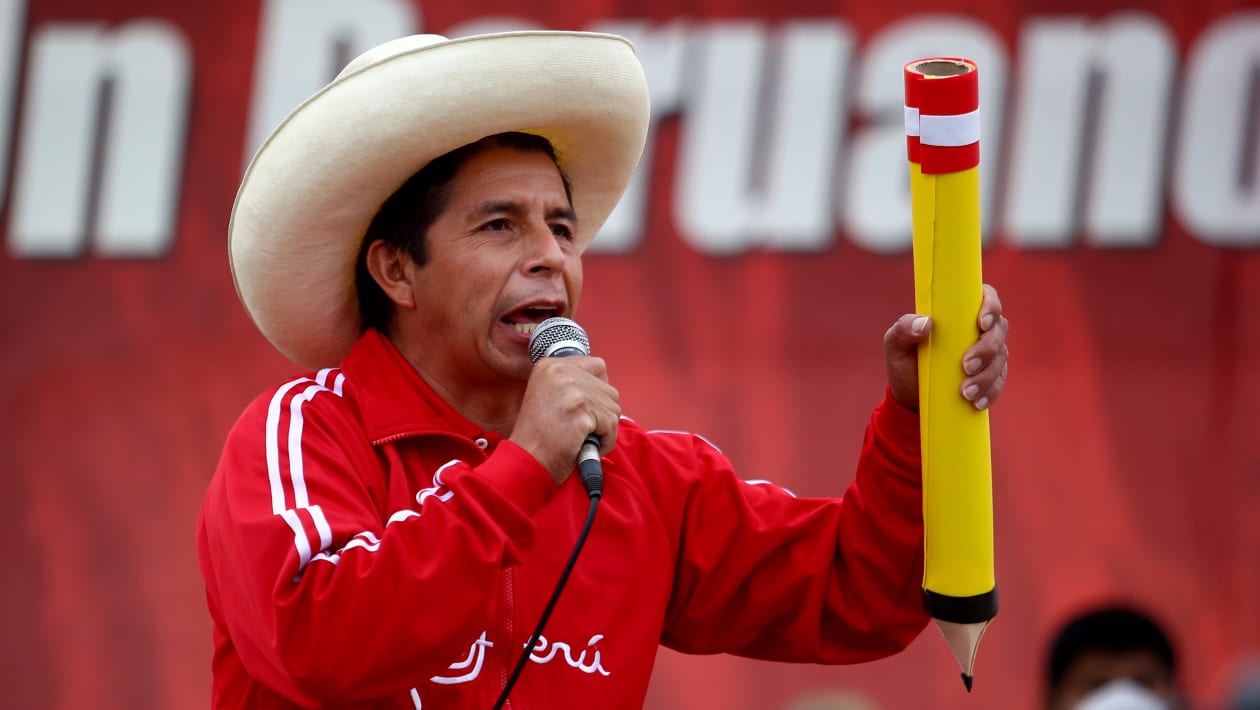
Primary School Teacher Becomes Peru’s President
After a long and tense election process, Pedro Castillo has been sworn as Peru’s president. His victory has shaken the political and business elite in a deeply polarised country hit hard by the pandemic.
Born in a tiny village in one of Peru’s poorest areas, Pedro Castillo grew up helping his illiterate parents with farm work. As a young student, he had to walk for more than two hours to reach school.
He eventually became a schoolteacher, a job he did for 25 years, and a union leader. And in a meteoric rise to power, despite having no experience in office, in 2021 he was elected president of Peru, propelled by the same rural voters he grew up with.
“Never again a poor man in a rich country!” was a regular message in his campaign rallies, as he voiced the frustration of struggling Peruvians. “I do know what it is to sweep a school,” he once said.
Casting himself as a man of the people, Mr Castillo was rarely seen without the traditional white, broad-rimmed hat of his Cajamarca region, and a huge inflatable pencil, the symbol of his Marxist Free Peru party which also represents his background in education.
He argues the country has not been governed in the interest of the vast majority, and has called for “drastic changes” to address poverty and inequality, including a controversial pledge to draft a new constitution.
His opponents have tried to portray him as a left-wing extremist with ties to communist guerrilla groups, allegations he denies. He has moderated his rhetoric, but critics remain concerned that some of his plans could undermine one of the most stable countries in Latin America.

